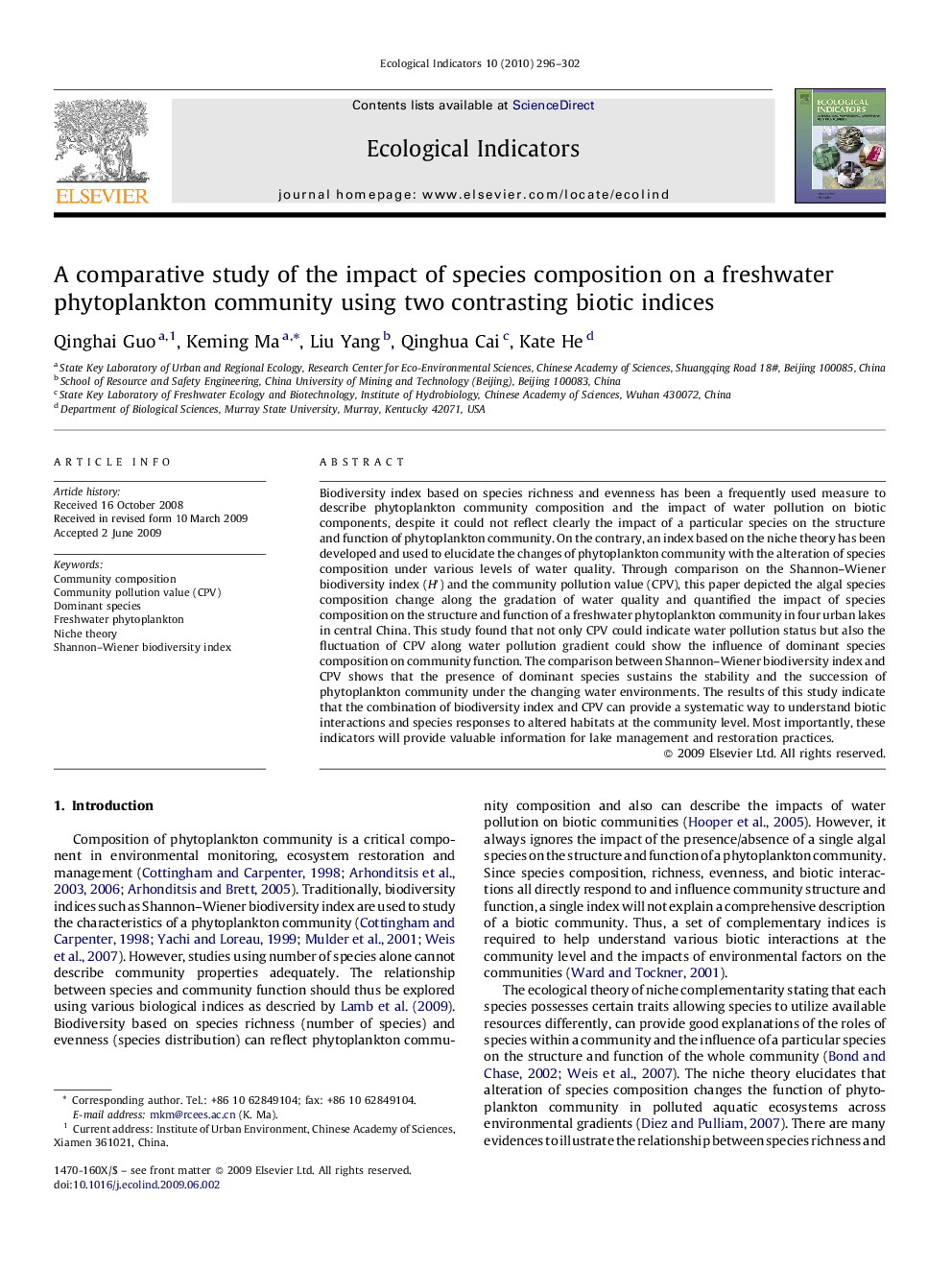| Article ID | Journal | Published Year | Pages | File Type |
|---|---|---|---|---|
| 4374285 | Ecological Indicators | 2010 | 7 Pages |
Biodiversity index based on species richness and evenness has been a frequently used measure to describe phytoplankton community composition and the impact of water pollution on biotic components, despite it could not reflect clearly the impact of a particular species on the structure and function of phytoplankton community. On the contrary, an index based on the niche theory has been developed and used to elucidate the changes of phytoplankton community with the alteration of species composition under various levels of water quality. Through comparison on the Shannon–Wiener biodiversity index (H′) and the community pollution value (CPV), this paper depicted the algal species composition change along the gradation of water quality and quantified the impact of species composition on the structure and function of a freshwater phytoplankton community in four urban lakes in central China. This study found that not only CPV could indicate water pollution status but also the fluctuation of CPV along water pollution gradient could show the influence of dominant species composition on community function. The comparison between Shannon–Wiener biodiversity index and CPV shows that the presence of dominant species sustains the stability and the succession of phytoplankton community under the changing water environments. The results of this study indicate that the combination of biodiversity index and CPV can provide a systematic way to understand biotic interactions and species responses to altered habitats at the community level. Most importantly, these indicators will provide valuable information for lake management and restoration practices.
